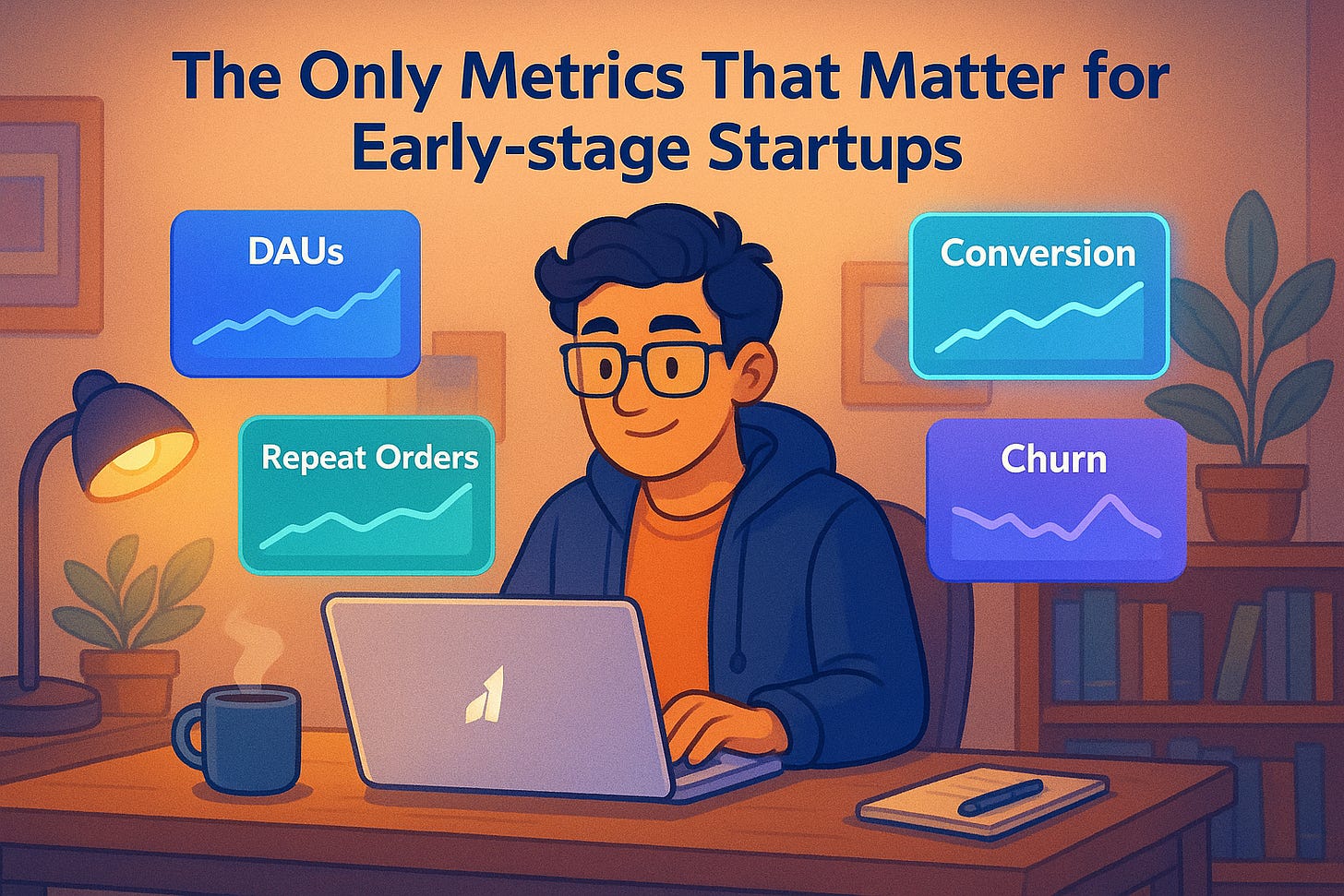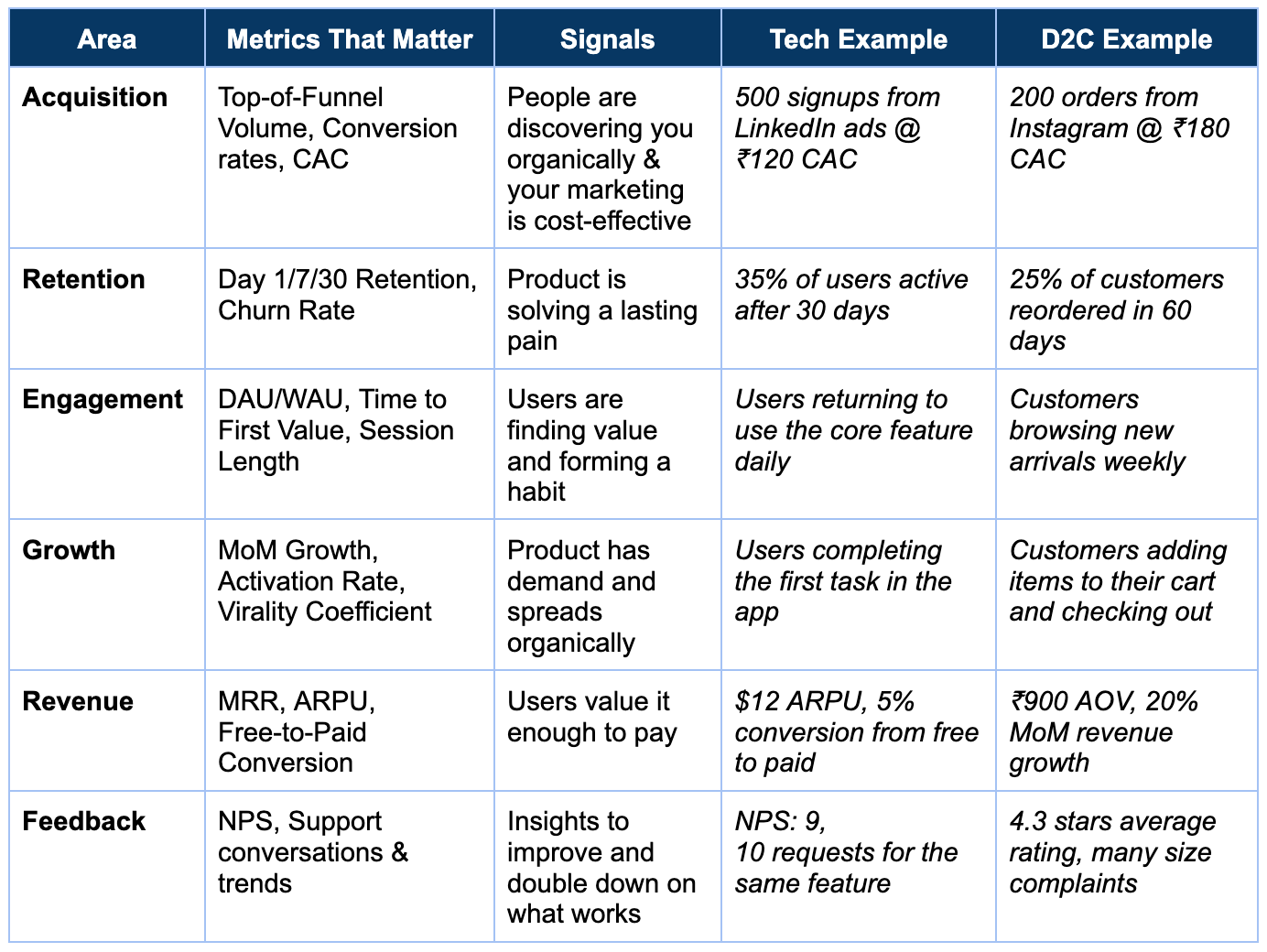The Only Metrics That Matter for Early-stage Startups
Early-stage founders don’t need more dashboards- they need direction. Here are the only metrics that actually matter when you’re just getting started.
In the earliest days of building a startup, especially when you're still finding your footing, it’s easy to get lost in a sea of numbers. There’s no shortage of dashboards, tools, and Twitter threads telling you which metrics you should obsess over. Yet ironically, many of these metrics are either misleading, inflated, or downright irrelevant for your stage. What you really need are metrics that give you a signal, not noise.
So, how do you do that? By anchoring yourself to the only metrics that truly matter to early-stage startups- those that help you answer: “Are we solving a real problem? Is there a repeatable value? And is this worth scaling?”
Before we discuss which metrics truly matter, it’s important to pause and ask why metrics matter at the early stage.
Why Metrics Matter at the Early Stage?
When you’re building a startup, intuition and vision are important, but they’re not enough. Early-stage founders often operate in uncertainty: limited resources, small teams, and evolving products.
Metrics matter because they help you validate whether you’re on the right track. They reveal if you're building something people want, if you're delivering consistent value, and if your early traction is worth scaling. Without them, you’re flying blind, pouring time and money into features, marketing, or inventory that may not move the needle.
For tech founders, metrics guide everything from user onboarding flows to pricing models. They help you understand what’s working (e.g., which features drive stickiness) and what needs fixing (e.g., high churn after sign-up).
For D2C founders, metrics help you identify the right channels, optimise your product mix, and assess the profitability of every order or campaign.
In short, in a world full of opinions- team, users, advisors- metrics give you something no one can argue with: truth!
Some Important Metrics
1. Acquisition
Acquisition is where your growth journey begins. It’s not just about how many people discover your product- it’s about how many of the right people show up, and at what cost.
What to Track
2. Retention
Early-stage founders often obsess over signups or sales, but acquisition numbers alone are misleading. What really counts is whether customers or users come back repeatedly. Retention is the strongest indicator that your product or brand fits a genuine need.
For a SaaS or B2B tool, you want to see whether users continue logging in and using core features. If 80% drop off after the first week, onboarding or product value needs work.
Anyone can sell once, especially with discounts. However, if customers reorder within 30–60 days or subscribe to auto-renewals, that shows product satisfaction and brand trust.
What to Track
3. Engagement
People who come back are retained. But people who spend time and explore deeply? They're engaged!
Strong engagement is a leading indicator of long-term retention. If users or customers interact with your product or brand more than once, it’s a sign they see value and might come back, refer others, or upgrade/buy again.
What to Track
4. Growth
Most founders get this wrong. They chase top-line user or revenue growth through ad spend or founder hustle, but don’t ask why customers are coming. But, healthy growth comes from a strong core experience.
What to Track
5. Revenue
At the early stage, revenue isn’t just about how much money you’re making—it’s about proof of value. Are customers willing to pay? Do they come back and spend again? Are you growing sustainably?
What to Track
6. Customer Feedback
Metrics alone don’t reveal motivations, blockers, or insights. Customer feedback, especially early on, is gold.
Feedback helps you:
Prioritise product features or SKUs
Uncover language-market fit
Diagnose why people drop off
Spark ideas for pivots
What to Track
The Early-Stage Metrics Cheat Sheet
Metrics, when chosen wisely, act as your early warning system and your progress tracker.
The truth is that you don’t need a hundred KPIs. You need a focused set of signals that tell you whether you're moving in the right direction. They show whether people are discovering you, engaging with what you’ve built, sticking around, and ultimately paying for it.
This cheat sheet breaks down the few metrics that actually matter, highlighting the core metrics that help you understand traction, engagement, and progress across both tech and D2C startups.
Final Thoughts
It’s simple. You don’t need to track everything. In fact, you shouldn’t! Instead, focus on a few key metrics- ones that reflect how people are finding you, how they’re engaging, and whether they’re sticking around.
A spike in engagement? That’s someone saying, “Hey, I liked that feature.” A drop in repeat purchases? That’s a clue that something in the experience didn’t land. When you start listening to the numbers, not obsessively but curiously, you create a feedback loop between your product and your people.
So don’t wait until you “scale” to start measuring. Even in the earliest days, your startup is already speaking to you. The right metrics just help you hear it more clearly.












